5 Procurement Audit Best Practices


A procurement audit isn’t just another routine task to check off your list.
Instead, regularly reviewing your procurement processes can be your secret weapon against the chaos of supplier inconsistencies, compliance headaches, and budgetary constraints.
By conducting thorough audits, you can reveal inefficiencies and make sure that your procurement is secure, free from fraud, and compliant, and that every dollar is well spent.
Today, we will uncover 5 best practices for carrying out procurement audits that will bring you these benefits.
Let’s dive in.
In procurement audits, setting clear objectives is your North Star for success.
When you define these objectives, you’re essentially mapping out the path your audit will take.
To be more descriptive, let’s say it’s like plotting coordinates on a map before starting the journey—you need to know where you’re going and how you’ll get there.
Typically, procurement audits focus on three main areas:
And all three are equally important.
For instance, contract auditing ensures adherence to contractual obligations from a legal point of view as well as supplier compliance, while procurement process auditing evaluates the efficiency and effectiveness of your procurement procedures.
On the other hand, historical audits delve into past documents and records to ensure compliance with established protocols.
In each of these areas, you can then define specific objectives.
Efrata Denny, a seasoned Supply Chain Expert with two decades of experience, elaborates:
“This involves determining the specific areas of procurement to be audited, such as supplier selection, contract management, or compliance with procurement policies.”
By outlining these objectives, you’re sharpening the focus of your audit efforts, ensuring that you’re targeting the right areas and addressing the most critical risks and priorities.
Now, let’s consider why this matters.
Imagine you’re in charge of a procurement team facing challenges with supplier reliability.
Without clear objectives, your audit might end up meandering aimlessly, possibly missing the root cause of the issue.
But with well-defined objectives that zero in on the supplier selection processes, you can hone in on the factors contributing to the problem.
This targeted approach to auditing allows you to identify any gaps or inconsistencies and devise strategies to improve supplier reliability.
That’s why it’s crucial also to define the scope of procurement audit, as Sayed Ramin Sadat, a former Audit General Director of the Ministry of Interior Affairs, Afghanistan, explains:
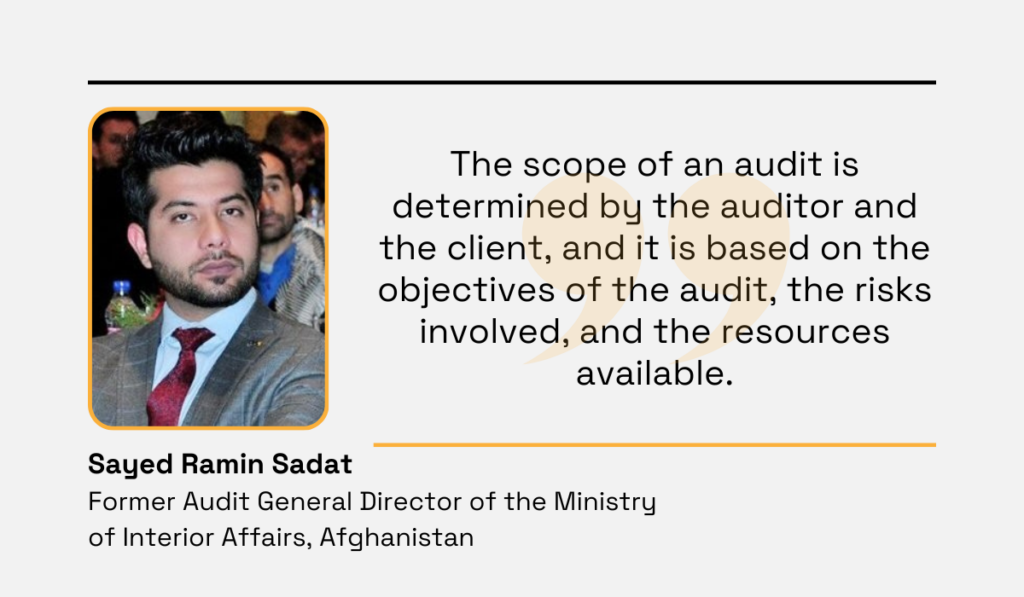
Illustration: Veridion / Quote: LinkedIn
When you have these two—scope and objectives—clearly defined, you can focus your efforts, align resources efficiently, and shape the audit process to achieve the desired outcomes.
As a procurement expert, you understand how important regular meetings are—both with your procurement team and other stakeholders.
When you sit down with your fellow procurement professionals, legal experts, finance colleagues, management representatives, and others, you can uncover all sorts of valuable information about procurement practices, risks, and challenges.
And you need all these insights for a successful procurement audit.
Srividhya Vaidyanathan, the Global Head of Supply Chain Architecture at Shell, couldn’t agree more.
She emphasizes the importance of stakeholder engagement in procurement audits and suggests conducting scoping meetings to set clear expectations.
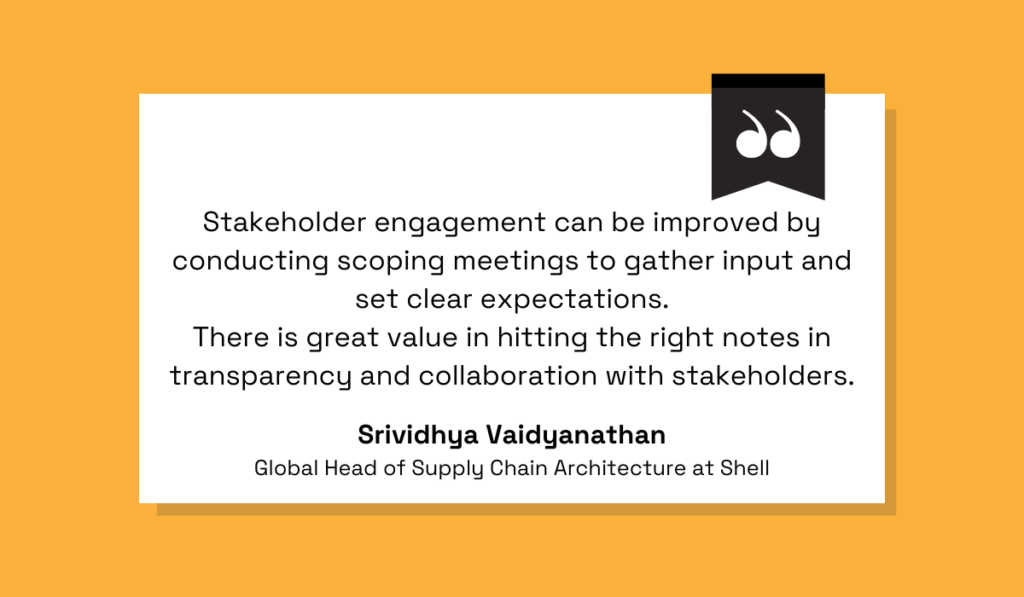
Illustration: Veridion / Quote: LinkedIn
These meetings first help define audit objectives and establish a roadmap for the process because stakeholders are given the chance to share the risks and issues they are dealing with.
For instance, chatting with finance stakeholders might reveal some financial risks that need to be addressed immediately.
Armed with this information, you can tailor your audit to tackle these challenges head-on.
Then, as the audit progresses, regular meetings should continue.
During these meetings, you and other stakeholders can review progress together, discuss findings, and address emerging issues—as a team.
If risks or deficiencies are uncovered, you can strategize, come up with solutions, and implement corrective actions promptly, ensuring the audit stays on track.
Bottom line?
Regular meetings with stakeholders are your best bet for a successful procurement audit.
By keeping the lines of communication open and engaging stakeholders early and often, you’ll gather invaluable insights, tackle challenges in real time, and carry out audits more successfully.
Keeping a detailed record of the procurement audit process is crucial for identifying potential weaknesses, inefficiencies, or deviations from best practices.
By documenting each step of the audit journey, you create a comprehensive repository of information that serves three key purposes:
Let’s focus for a moment on the first point.
When you record your procurement audit process, it’s critical to note down every detail during the procurement audit, particularly anomalies that raise suspicion.
These anomalies could indicate potential fraud or instances where financial figures, communications, or deadlines do not meet the business’ standards or legal requirements.
Let’s take a look at the Helsinki University Hospital’s (HUS) internal procurement audit from 2018, where detailed records proved critical.
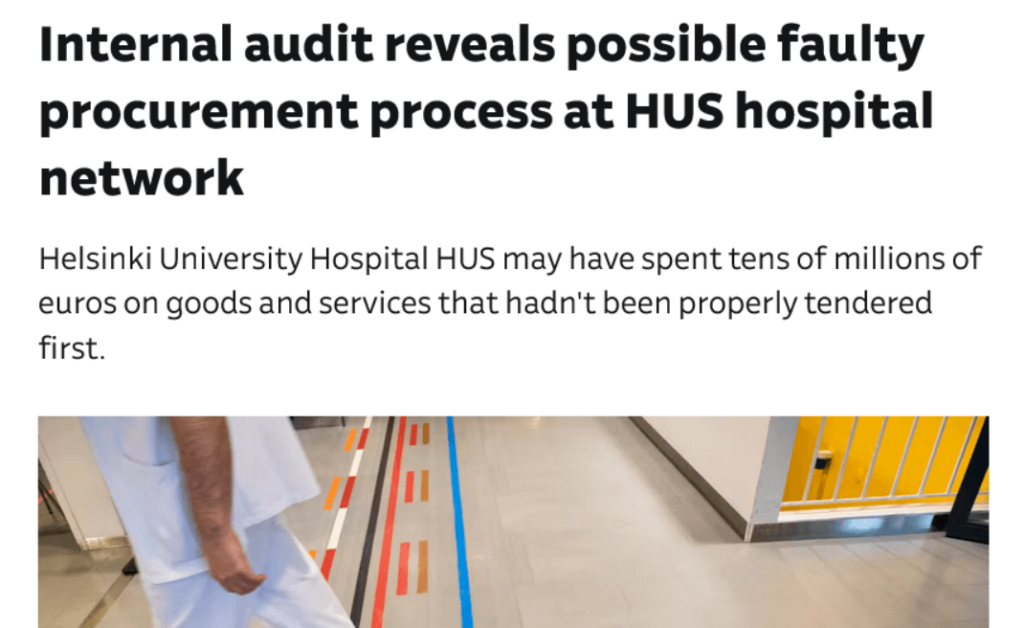
Source: yle
As you can see from this headline, the audit revealed potential expenditures of tens of millions of euros on goods and services that were not properly tendered, contravening legal policies.
Additionally, internal procurement monitoring within the organization was lacking, indicating negligence of legal provisions associated with public procurement.
Since these discrepancies (and several others) were documented in the procurement audit record, areas for immediate investigation were identified and noted down.
The records were then handed over to The Finnish Competition and Consumer Authority’s public procurement supervision unit for further investigation.
Will every procurement audit uncover such anomalies?
Hopefully not.
However, maintaining official records throughout the entire procurement audit process and noting down findings and recommendations will make sure that stakeholders remain well-informed about any areas of concern or potential weaknesses in the purchasing process.
These records, then, lay the groundwork for implementing corrective measures to enhance procurement integrity and effectiveness.
Take a look at the example below:
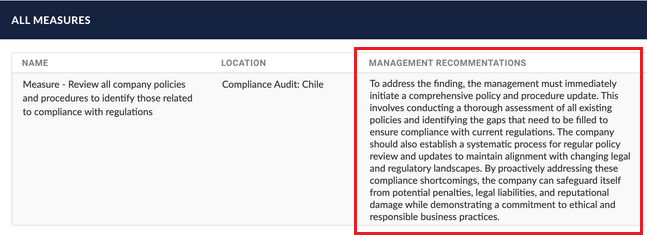
Source: Corporater
And last but not least, documenting the audit process is a valuable reference for future audits, providing a standardized framework for consistent audits over time.
By following the same steps and procedures, you ensure that no aspect of the audit is overlooked or omitted, and that the integrity and reliability of the audit process is maintained.
To recap, detailed record-keeping throughout the procurement audit process is essential for promoting transparency, accountability, and continuous improvement.
By documenting every detail and anomaly, you can identify areas for improvement and then optimize procurement practices accordingly.
In the world of procurement audits, objectivity is everything.
It’s an absolute necessity to ensure the credibility and trustworthiness of your findings and recommendations.
Without objectivity, your assessments may be clouded by bias or external influences, undermining trust and confidence in the audit process.
So, how do you ensure objectivity?
One key aspect is avoiding conflicts of interest, such as auditing your own department.
When you’re too close to the subject matter, it’s easy for personal relationships or organizational dynamics to sway your judgment, leading to biased assessments.
Instead, consider bringing in dedicated auditors who are independent of the procurement department.
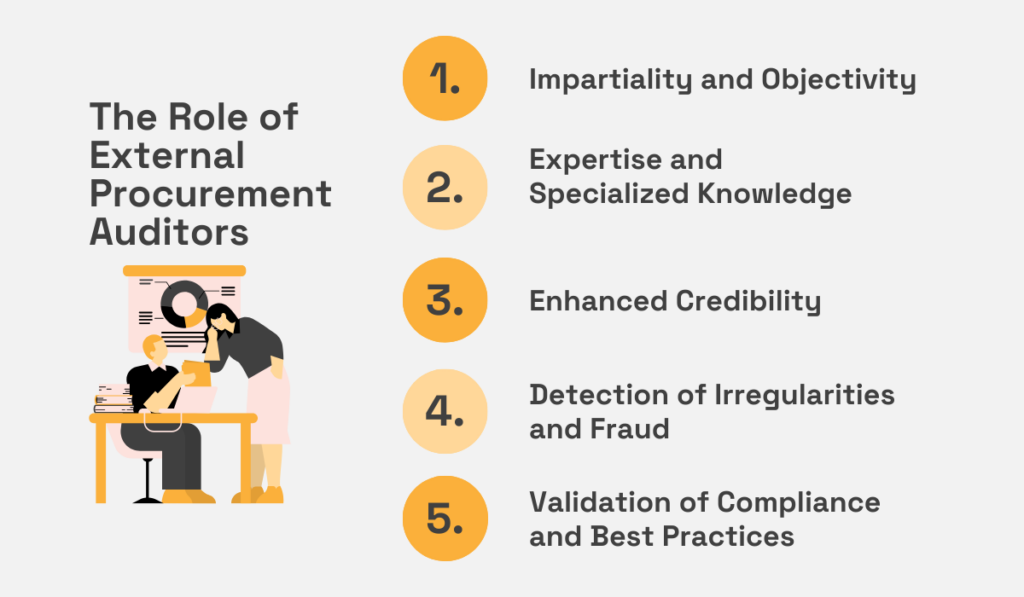
Source: Veridion
These external auditors offer fresh perspectives and expertise, which enhances the credibility, accuracy, and effectiveness of the audit process.
They’re not influenced by internal politics or allegiances, which allows them to give impartial assessments and recommendations.
Of course, it’s essential to provide these auditors with a thorough understanding of your procurement processes and policies.
Transparency is key to ensuring they can effectively evaluate your practices and make meaningful recommendations for improvement.
Plus, they should have experience in procurement auditing.
Consider the scenario of a government agency where an audit uncovered lapses, including the transfer of official funds to personal bank accounts.

Source: The Straits Times
Despite internal oversight, these irregularities remained undetected until an independent auditor conducted a thorough review.
In short, keeping objectivity in procurement audits is crucial.
By avoiding conflicts of interest and bringing in independent auditors, you can make sure your audit is fair, credible, and effective.
It’s a common misconception that procurement audits must be done manually or that you’re solely responsible for every aspect of the process.
In reality, there are powerful tools available to assist you and your team or auditors in conducting thorough and efficient audits.
One such tool is a comprehensive eProcurement platform, which consolidates all source-to-contract data and communication in one centralized software.
Through this platform, you can effortlessly access and review all purchase orders, invoices, as well as supplier contracts in one place.
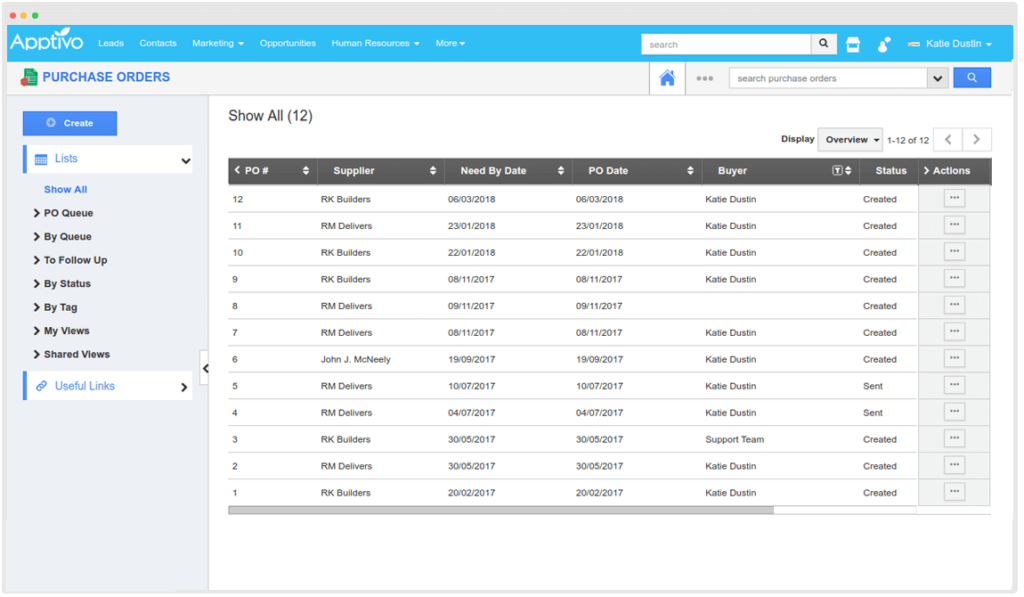
Source: Apptivo
For example, by examining purchase orders and invoices, you can easily detect fraud or non-compliance with procurement policies.
Having all the sources in one place simplifies the auditing process, allowing you to quickly identify inefficiencies and areas for improvement.
However, managing a large volume of data manually can be overwhelming and time-consuming.
That’s where data analytics tools come in.
These tools are specifically designed to analyze vast amounts of data and identify anomalies or discrepancies swiftly.
For instance, imagine having hundreds or thousands of purchase orders to review.
Data analytics tools can efficiently sift through this data, flagging any irregularities that require further investigation.
In addition to data analytics tools, you can integrate specialized audit software and technology solutions to automate audit procedures, making the process faster and more accurate.
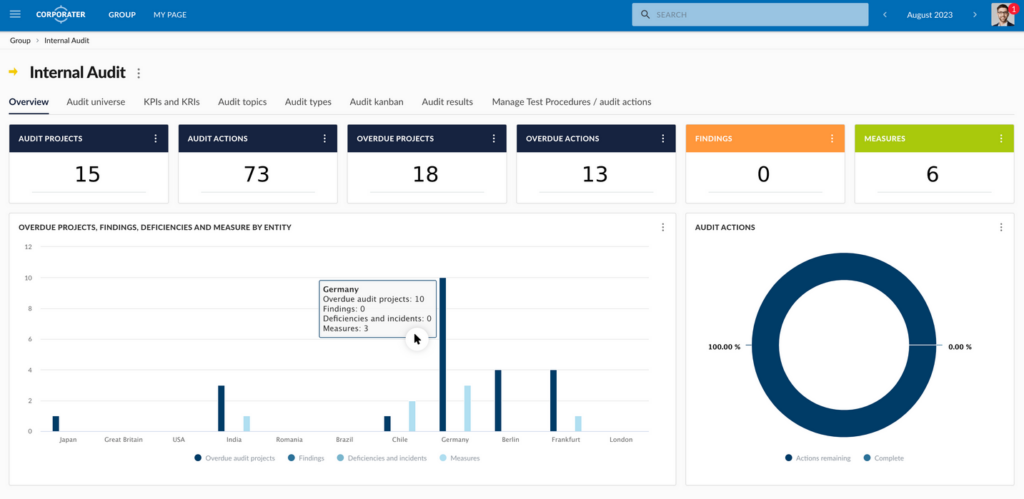
Source: Corporater
These tools can, for instance, automatically distribute documents to the relevant stakeholders, ensuring that everyone has access to the information they need for the audit.
All these tools also automate repetitive tasks, so you can focus your time and energy on more strategic aspects of the audit process.
Lastly, leveraging supplier discovery platforms like our Veridion can also aid procurement audits.
Veridion provides insights for benchmarking your organization’s procurement practices, allowing you to assess effectiveness, identify areas for improvement, or negotiate better terms with suppliers.
On top of that, Veridion’s AI-powered systems generate audit trails that enhance insights into company-wide buying behaviors and enable real-time monitoring.
The latter helps you promptly identify any issues or irregularities with your suppliers.
By doing so, you can address these problems before they escalate and affect your procurement process.
This also ensures that your audits are based on accurate and up-to-date information, making them fair and reliable assessments of your procurement practices.
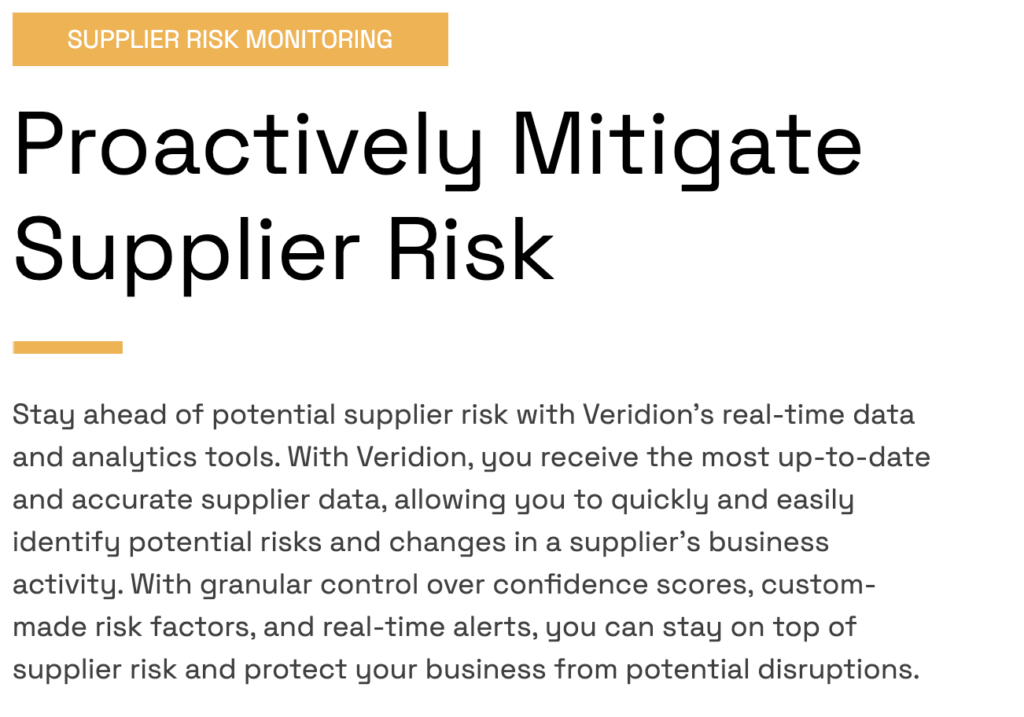
Source: Veridion
As you can see, there are many different tools on the market that can speed up, improve, and ensure the integrity and accuracy of your audits.
So, make use of them.
Embracing the power of procurement audit best practices and leveraging innovative tools can revolutionize your approach to auditing.
From clearly defining audit objectives, conducting regular meetings, and maintaining objectivity to utilizing eProcurement platforms, data analytics tools, and specialized audit software, you can enhance your procurement audits’ efficiency, accuracy, and effectiveness.
Remember: audits don’t have to be burdensome or conducted manually.
With these five best practices, you can streamline procurement audit processes, pinpoint areas for improvement, and continually enhance your procurement operations.